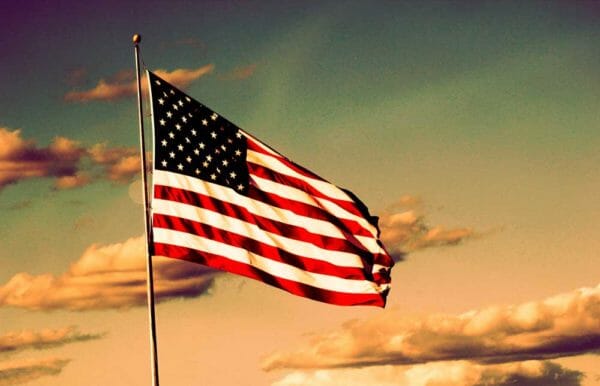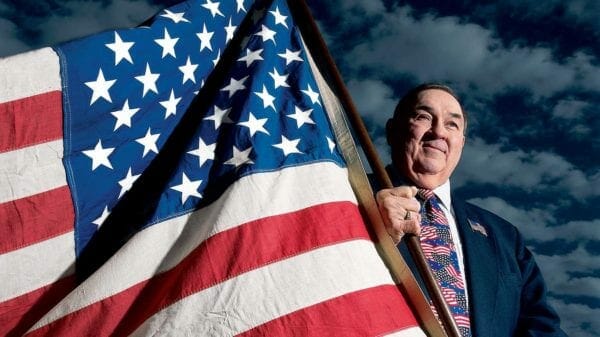
U.S.A. –-(AmmoLand.com)- The history of our country’s flag is rooted in the Flag Resolution of June 14, 1777. Officially, the resolution states: “Resolved: that the flag of the United States be made of thirteen stripes, alternate red and white; that the union be thirteen stars, white in a blue field, representing a new Constellation.”
That was all the direction that Congress provided. Like many government directives of that time, it provided the foundation and left the details a bit vague.

It’s interesting to note that the stars were meant to symbolize a new constellation – a nod to the new nation – but that’s the only specific symbolism. The colors themselves were a holdover from the British flag, but with no specified holdover of meaning. They’re just colors. Nothing more, nothing less.
Between 1777 and 2021, there have been 27 different versions of what we know today as the official flag of the United States of America. Most – but not all – of those versions have simply involved the adding of stars for the admission of new states. Like all things government-related, there was some lag time involved, and flags were not always officially updated with the new number of stars.
In 1794, an act was approved that said all flags would have 15 stripes and 15 stars after May 1795. Two states and stars were added in a batch, bringing us to 15.

In 1818, the design reverted back to 13 stripes and one star for each state, to be added to the flag on the 4th of July following the admission of each new state. Five more states and stars were added in this batch, bringing us to 20.
We went from 20 to 21 stars, then jumped from 21 to 23 stars, then individually again from 23 to 38 stars. Five more were added in 1890, taking us from 38 to 43 stars. The only other multiple-star jump was in 1912, going from 46 to 48 stars.
For most of our country’s history, flags have taken on a wide variety of designs that adhered loosely to the original idea established in 1777. This is because there was no official guidance on proportion or arrangement for the first 135 years, and it explains why there’s been such artistic variety in star arrangement: circles, patterns, etc.

That all changed in June 1912 with an Executive Order signed by President Taft. It established official proportions of the flag and stated the arrangement of the stars should be done in six horizontal rows of eight each, with a single point of each star to be directed upward.
President Eisenhower signed two more Executive Orders, both in 1959, making the arrangement of the stars in seven rows of seven stars each, staggered horizontally and vertically. Later that year, the arrangement of the stars was to be done in nine rows of stars staggered horizontally and eleven rows of stars staggered vertically.

The design of the American flag (that is, the pattern of the stars) has remained unchanged since July 4, 1960. It was designed by a high school student named Bob Heft from Ohio. His teacher gave him a B- and said the grade could be changed if his design was officially adopted. Luckily for Heft, it was, and he ended up with an A.
In 2007, the current 50-star flag became the longest-flying design in US history, having flown for 47 years. On July 4, 2021, this flag will have been flying for 61 years, covering 12 different administrations.
There have been rumblings recently about changing the flag’s design, either because of the hope of turning Washington, D. C. into the 51st state, or by people wrongly claiming the design is rooted in racism. Whatever the future of the flag may hold, one thing is certain: it will take a literal act of Congress for any change to officially be made.
About Logan Metesh
Logan Metesh is a historian with a focus on firearms history and development. He runs High Caliber History LLC and has more than a decade of experience working for the Smithsonian Institution, the National Park Service, and the NRA Museums. His ability to present history and research in an engaging manner has made him a sought after consultant, writer, and museum professional. The ease with which he can recall obscure historical facts and figures makes him very good at Jeopardy!, but exceptionally bad at geometry.

